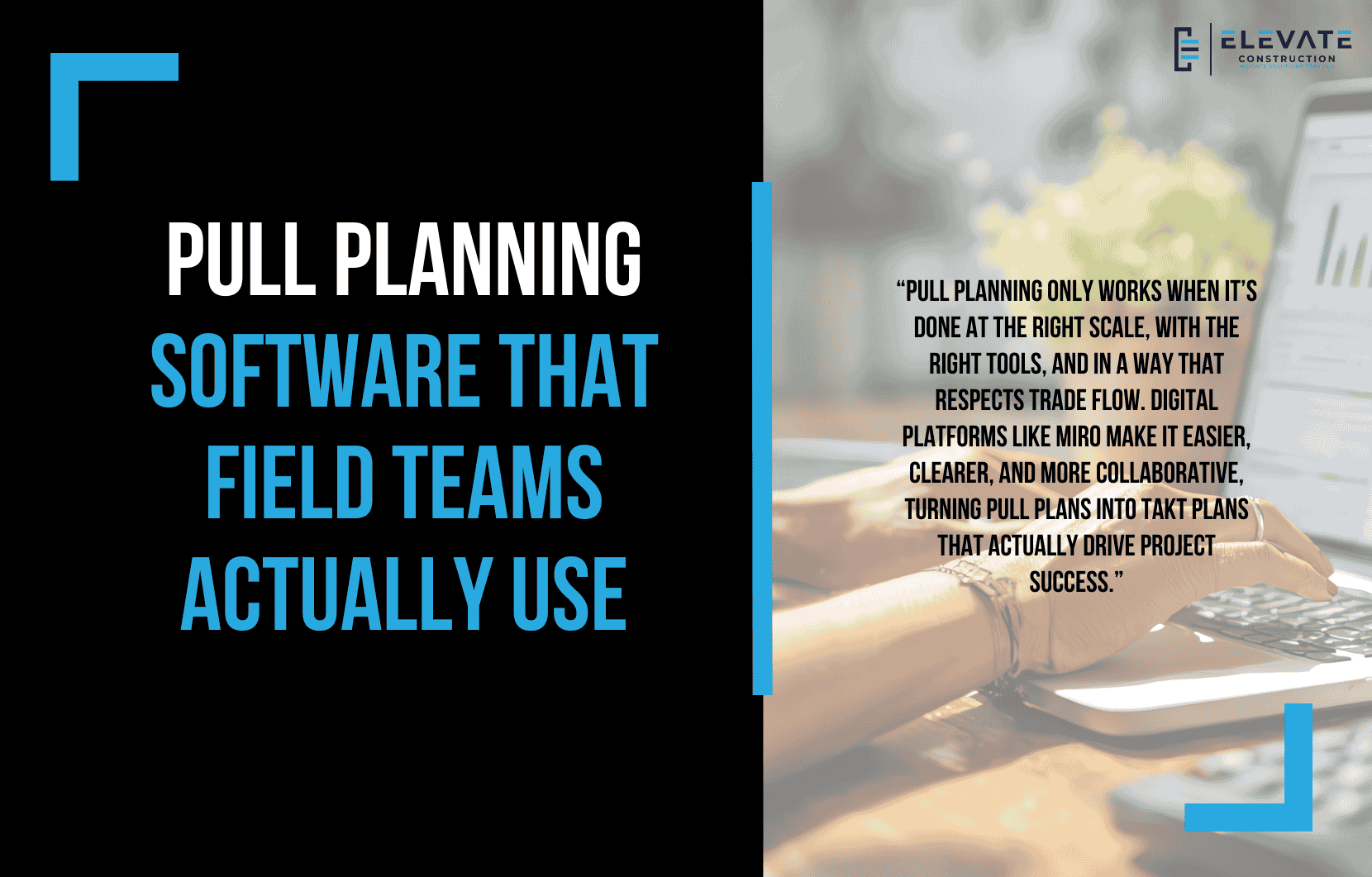Pull Planning Software That Field Teams Actually Use
In this blog, I’ll walk you through some of the key things we need to remember, and I’ll also answer five specific questions that came our way about pull planning.
Along the way, I’ll share helpful resources, clear up common myths, and explain why certain approaches just don’t work in practice.
Helpful Resources
Before we dive in, here are a few resources worth checking out:
- The book Takt Planning.
- The book Takt Steering and Control.
Common Problems with Industry Pull Planning
If you approach pull planning the way it’s traditionally taught in the industry, you’ll likely overrun deadlines, create large batch areas, and lose overall flow. The system just doesn’t serve your project’s throughput time effectively.
One big myth is that pull planning only works with physical sticky notes. But in practice, handwriting is messy, hard to read, and the whole exercise ends up being more about sticking notes on a wall than about meaningful planning.
Why Digital Works Better
That’s why I always prefer to run pull plans digitally, often using tools like Miro. With a digital whiteboard on a screen or projector, everyone sees clear, typed stickies. It allows for quick analysis, remote collaboration, and ensures every trade partner still declares their tasks.
Another myth is that you should pull plan huge phases or entire floors. In reality, pull planning works best in small zones, typically 5,000–15,000 square feet. Each zone is planned individually, then combined to create a full phase plan. Using takt time calculations helps ensure the zones flow together diagonally and meet milestones.
The Best Way to Pull Plan
When it comes to execution, Miro is my preferred software. It allows you to:
- Create stickies per day.
- Do forward and backward passes.
- Compare across phases.
- Maintain clarity with typed notes.
This approach keeps planning efficient and collaborative without the clutter of handwritten stickies.
Answering the Big Questions
Here are some of the top questions I often get:
- What’s the best pull planning software?
I’ve tried many, but most force trade partners into complex apps and high costs (sometimes as high as $75,000 a year!). For me, Miro wins because it’s simple, flexible, and collaborative. - Why doesn’t my team use the software we’ve already paid for?
Most construction softwares today just don’t work as intended. They’re often tied to legacy systems or misguided lean approaches. Mandating software never works, tools should prove their value naturally. - Can we still use sticky notes and go digital?
Yes. Miro’s sticky notes let you go fully digital while keeping the spirit of pull planning alive. - What’s the difference between a pull plan and a Gantt chart?
A Gantt chart is a push system organized by deliverable. A pull plan is organized by location, with commitments and needs declared clearly. It respects trade flow and supports true lean planning. - How do you keep a pull plan alive past the meeting?
Simple, all pull plans evolve into norm-level takt plans. A pull plan is a single sequence in one zone, while a takt plan integrates multiple zones into a phase-wide flow.
Key Takeaway
Pull planning only works when it’s done at the right scale, with the right tools, and in a way that respects trade flow. Digital platforms like Miro make it easier, clearer, and more collaborative, turning pull plans into takt plans that actually drive project success.
If you want to learn more we have:
-Takt Virtual Training: (Click here)
-Check out our Youtube channel for more info: (Click here)
-Listen to the Elevate Construction podcast: (Click here)
-Check out our training programs and certifications: (Click here)
-The Takt Book: (Click here)
Discover Jason’s Expertise:
Meet Jason Schroeder, the driving force behind Elevate Construction IST. As the company’s owner and principal consultant, he’s dedicated to taking construction to new heights. With a wealth of industry experience, he’s crafted the Field Engineer Boot Camp and Superintendent Boot Camp – intensive training programs engineered to cultivate top-tier leaders capable of steering their teams towards success. Jason’s vision? To expand his training initiatives across the nation, empowering construction firms to soar to unprecedented levels of excellence.
On we go

